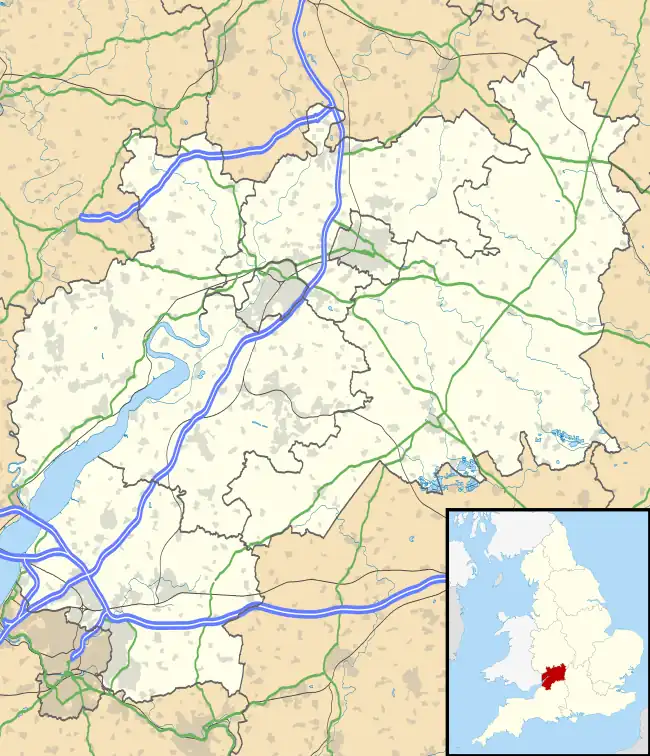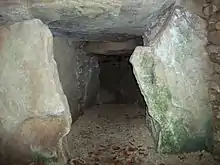Uley Long Barrow
Uley Long Barrow, also known locally as Hetty Pegler's Tump, is a Neolithic burial mound, near the village of Uley, Gloucestershire, England.
| Uley Long Barrow | |
|---|---|
 The entrance to Uley Long Barrow | |
| Type | Transepted gallery grave |
| Location | Uley |
| Coordinates | 51°41′55″N 2°18′21″W |
| OS grid reference | SO 78953 00034 |
| Area | Gloucestershire |
| Built | Prior to 3000 BCE |
| Owner | English Heritage |
| Official name | Uley long barrow, also known as Hetty Pegler`s Tump, 400m south-east of Knapp Farm House |
| Designated | 21 October 1921 |
| Reference no. | 1008195 |
 Location of Uley Long Barrow in Gloucestershire | |
Details
Although typically described as a long barrow, the mound is actually a transepted gallery grave. It was probably built before 3000 BC.[1]
It measures about 37 metres (121 ft) long, 34 metres (112 ft) wide, and has a maximum height of 3 metres (9.8 ft).[2] It contains a stone-built central passage with two chambers on each side and another at the end. The earthen mound is surrounded by a dry-stone revetting wall.
The barrow was archaeologically excavated in 1821, revealing the remains of fifteen skeletons and a later, intrusive Roman age burial above the northeast chamber. It was excavated again in 1854.
The mound is nicknamed after Hester, wife of the 17th-century landowner Henry Pegler. Hester died in 1694, and Henry in 1695. It is clearly signposted from the side of the nearby Crawley Hill (B4066 road) between Uley and Nympsfield. It is about 1.4 kilometres (0.87 mi) south of Nympsfield Long Barrow.

The barrow was reopened in 2011 after a short closure for essential health and safety work.
See also
References
- History and Research: Uley Long Barrow, English Heritage, retrieved 11 April 2012
- Uley Long Barrow, Pastscape, retrieved 11 April 2012